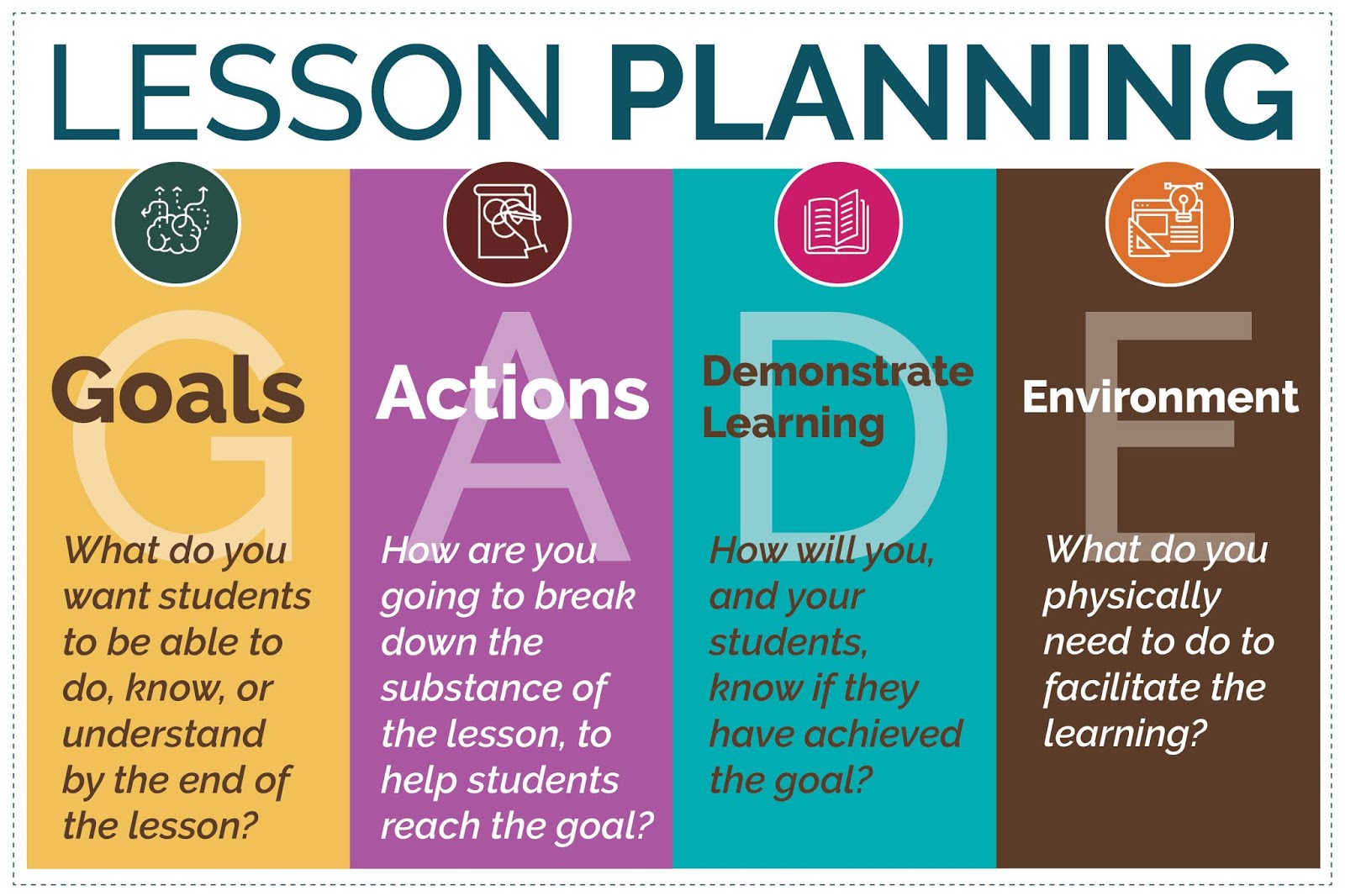Module 1: Introduction to instructional (lesson) planning
Content:
1.1. Definition of instructional (lesson) planning
1.2. The importance of planning
1.3. Steps in the instructional planning process
1.4. Principles of Lesson Planning
Introduction:
Are any of these effective learning environments?



What are the components of effective instruction?
Teaching is the systematic presentation of content assumed necessary for mastery within a general area of knowledge.
Instruction is a general term that means providing knowledge in a systematic way. The characteristics or components of effective instruction
can be represented in four groups:
1. Planning instruction
2. Managing instruction
3. Delivering instruction
4. Evaluating instruction
All teachers plan, manage, deliver, and evaluate their instruction, whether they are working with students who are gifted, students with disabilities, or students without special needs.
1.1. What is instructional (lesson) planning?

1.2. Why is planning for instruction important?
(439) OnTESOL: Why is Lesson Planning Important? - YouTube
Links to an external site.
Effective planning is a crucial component of effective teaching. Teachers use planning to help them select the goals, content, activities, learning materials, and methods that will help their students achieve predefined learning goals. Without effective planning, students are less likely to achieve these goals.
Teachers must be able to plan and manage instruction based upon knowledge of the subject matter, students, the community, and curriculum goals. Well-planned instruction that is aligned to the content and needs of the students is a teacher's most powerful tool to engage students, manage the classroom, and improve student learning. Instructional planning always starts with the goals: What content must be learned? What skills must be developed? What concepts must students understand?

1.3. What are the steps in the instructional planning process?

Planning means making decisions about what information to present, how to present the information, and how to communicate
realistic expectations to students. Planning instruction, then, involves three steps:
1. Deciding what to teach:
Deciding what to teach enables teachers to match instruction to each student’s skill level. The process of deciding what to teach
includes:
- Assessing students’ skills
- Analyzing the instructional task
- Establishing a logical instructional sequence
- Considering contextual variables
- Analyzing instructional groupings
- Identifying gaps between actual and expected performance
2. Deciding how to teach:
This process includes:
- Setting instructional goals
- Selecting instructional methods and materials
- Pacing instruction appropriately
- Monitoring performance and replanning instruction
3. Communicating realistic expectations:
This process includes:
- Actively involving students in learning
- Explicitly stating expectations
- Maintaining high standards
Great lessons need clear direction, purpose, pacing, and solid pedagogy. While planning such successful, well-balanced, dynamic lessons takes time (think of all those observation lessons), if you get into a strong habit of working through a few key steps, it simplifies the whole process. And, as with all habits: the more you do it, the easier it becomes. Soon you internalize the steps and find yourself doing them without even realizing it.
Simple steps for effective lesson planning

1.4. What are the principles of lesson planning?
1. First, it should be structural and logical.
For example: use the structure “review the last lesson by giving feedback”.
2. Second, keep it simple.
Lesson plans should not be wordy and the teacher can not rely on them too much or the class will lose flexibility.
3. Third, write the anticipated time for each section and stage and try to control the time well.
4. Fourth, check the balance of skills.
Receptive skills, which refers to listening and reading skills, and productive skills, which refers to speaking and writing skills.